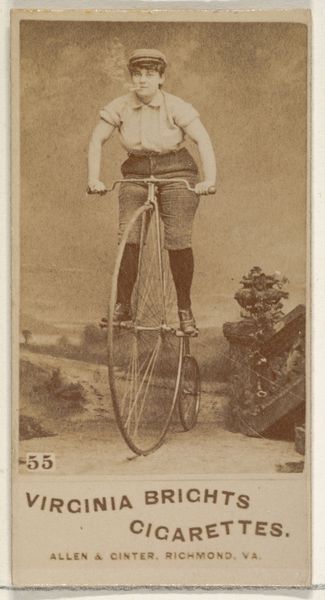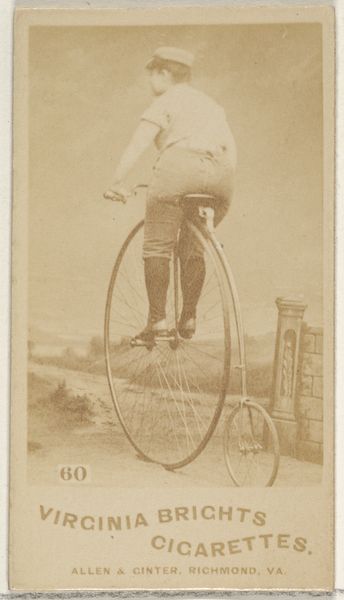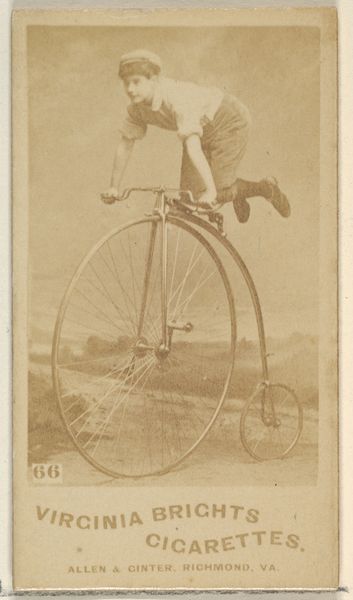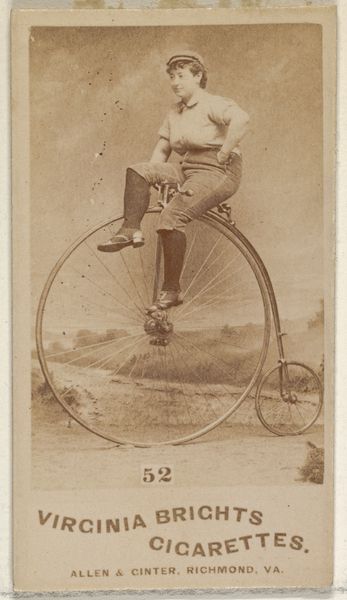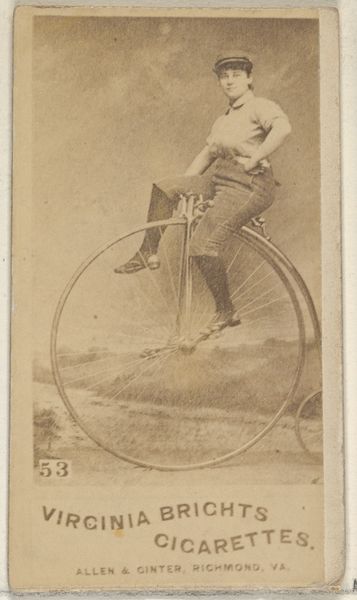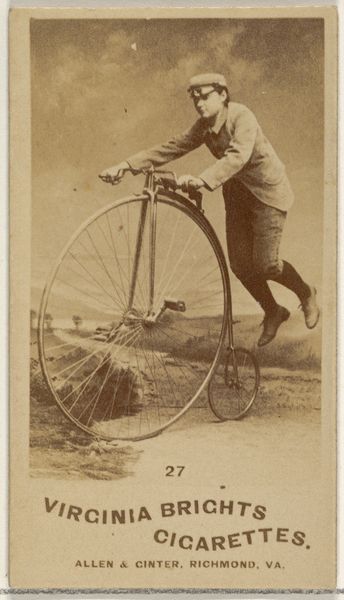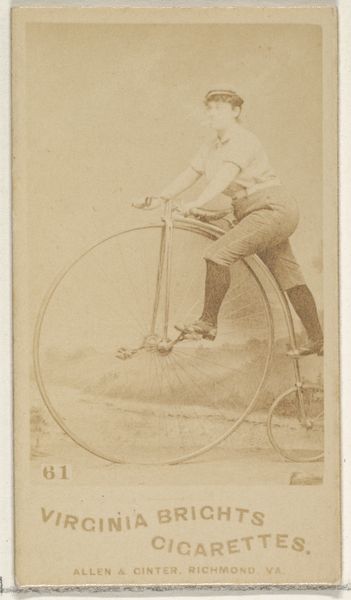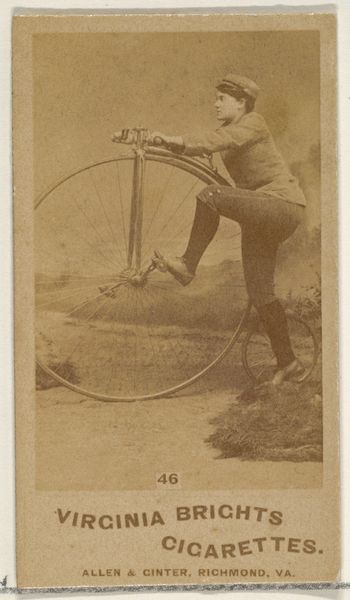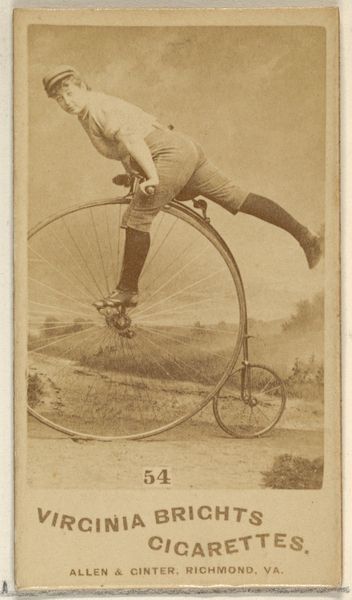
Card 37, from the Girl Cyclists series (N49) for Virginia Brights Cigarettes 1887
0:00
0:00
Dimensions: Sheet: 2 3/4 x 1 3/8 in. (7 x 3.5 cm)
Copyright: Public Domain
Curator: Here we have a trading card from the 1887 series “Girl Cyclists,” produced by Allen & Ginter for Virginia Brights Cigarettes, presently residing at the Metropolitan Museum of Art. It depicts a woman confidently riding a high-wheeled bicycle. Editor: The first thing that strikes me is the audacity. A woman so unapologetically claiming public space in a period so fraught with constraints? It’s instantly empowering. Curator: These cards were hugely popular as collectibles, enclosed in cigarette packs. While seemingly innocuous, they offer a fascinating snapshot into societal attitudes about women and sport at the time. Bicycling granted women unprecedented mobility and independence. Editor: Precisely! Think of the garment reform required. Away with the corsets, the long skirts! Cycling becomes a vehicle—literal and figurative—for challenging gender norms. The fact that a tobacco company is distributing these images adds another layer. Curator: Absolutely. The commodification of this “New Woman” served commercial interests, yes, but also contributed to a wider dissemination and, arguably, acceptance of evolving roles. The idealized image softens what was, at the time, seen as scandalous. Editor: Scandalous maybe for the elite. But among working-class women, that freedom meant increased work and business opportunities, further dissolving oppressive standards of middle- and upper-class domesticity. Curator: Indeed. While mass culture tends to dilute the revolutionary power of these types of figures and imagery, they often served as symbols to champion, even if briefly. There's certainly a performative aspect at play; women in this era still were performing the ideal as the New Woman, not quite a natural reality at the time, necessarily. Editor: And how powerful for working girls to then see this projected so widely, distributed even through everyday purchases like cigarette packs. It’s a complex dance between corporate capitalization and real cultural impact. Curator: It's definitely something to consider when we examine artifacts like these. The rise of bicycling had transformative implications for late 19th century social order. Editor: Agreed. I'll think about that again now—how even these simple images serve as points for re-evaluation and challenge how we see these power dynamics in the art of that era.
Comments
No comments
Be the first to comment and join the conversation on the ultimate creative platform.
